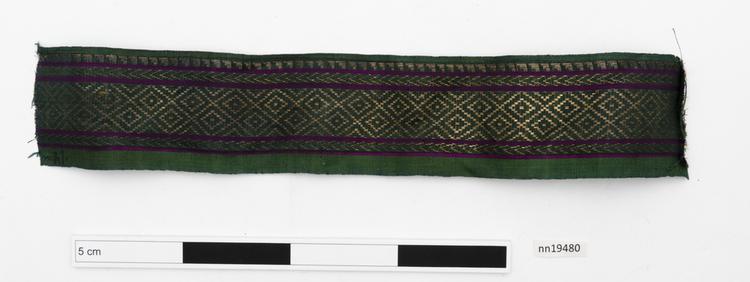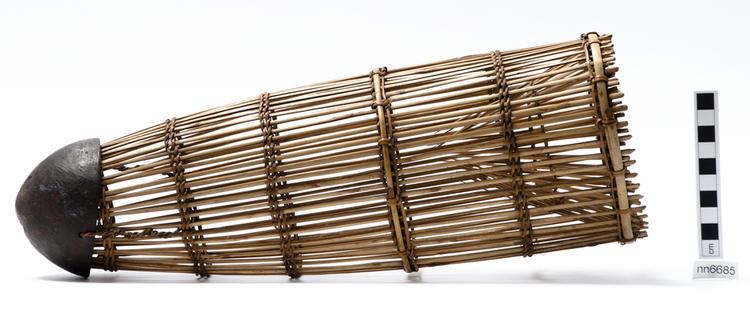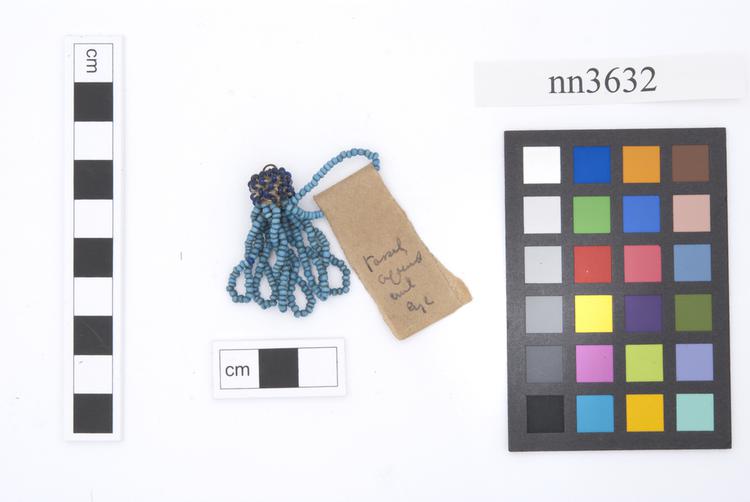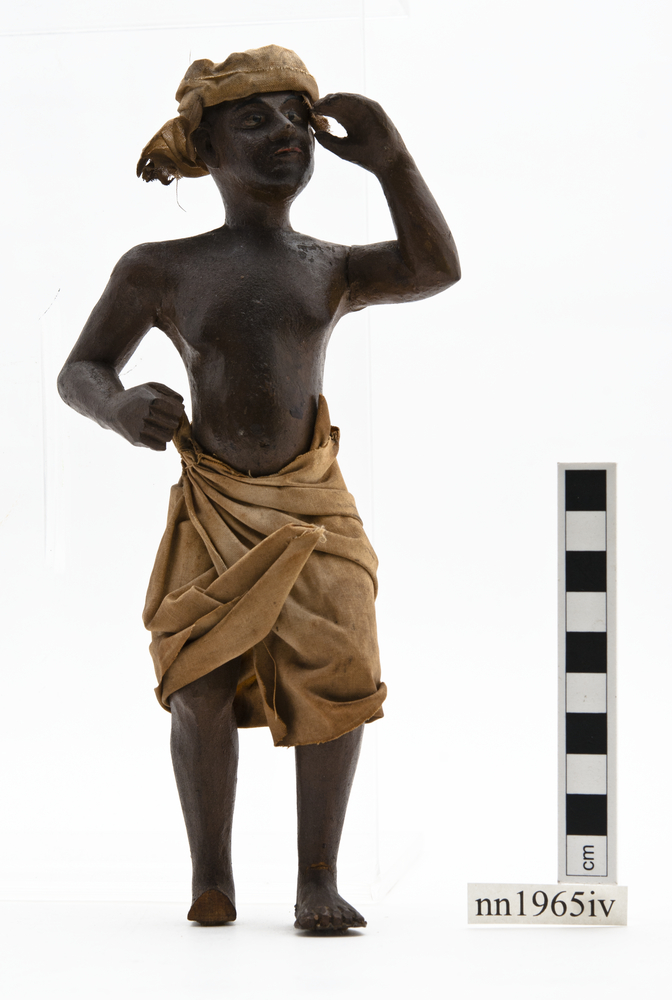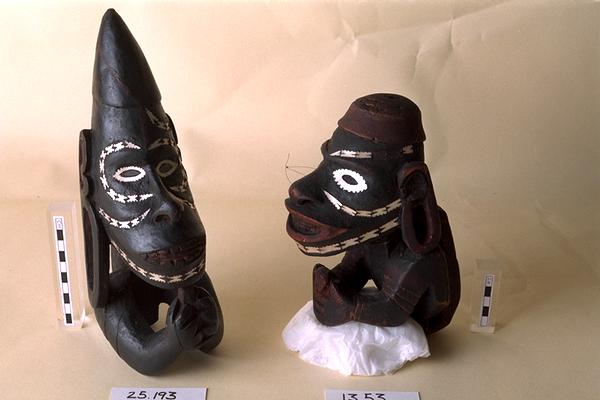
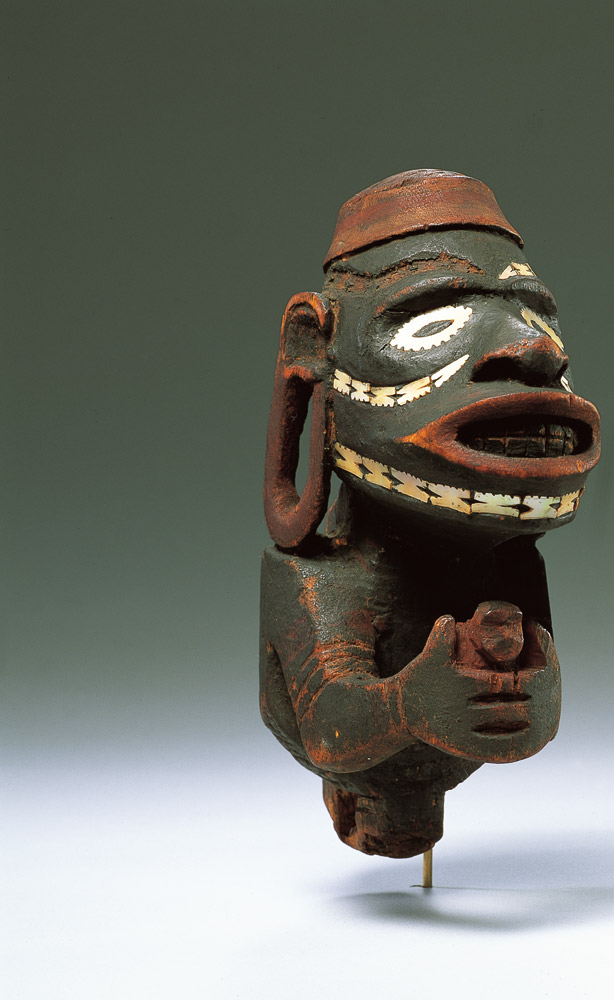
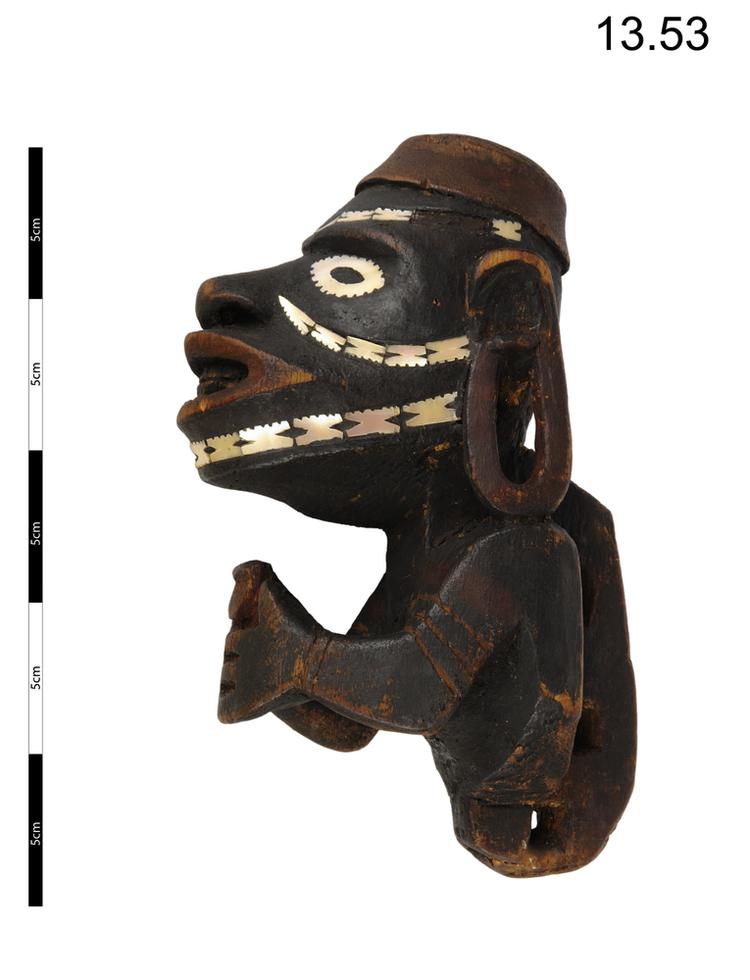
Canoe prow figure head called an Nguzu nguzu. These traditional figureheads were affixed to canoes in the Solomon Islands. The figure head has a jutting jaw as well as circular ear ornaments. Mother of pearl inlay is used to decorate the face of the figure, firstly by illustrating the eyes and secondly with hourglass shaped inlays, used to define the facial features. Below the figures head are arms which are grasped together, holding another head.
War-Canoe Figurehead, Musumusu, Probably Roviana Lagoon, Solomon Islands, Central Melanesia. Tomako war canoes from Roviana Lagoon in the Solomon Islands generally bore a detachable carved humanoid figurehead. These sculptures were termed nguzunguzu or toto isu in other areas of the Solomon Islands, but in Roviana they were known as musumusu. They have long been highly acclaimed by connoisseurs of World Art. Inlaid with little pieces of shell from the Chambered Nautilus (Nautilus pompilius), these serene, elongated busts are set on the prow at the waterline, so that they dip in and out of the sea as the tomako is rowed to war. Their apparent serenity belies the fact that they were carved to bring protection and success to the warriors aboard as they undertook headhunting raids. We can recognise this military purpose by the war-cap the figure wears, mimicking the kind of basketry helmets worn by some Solomon Islands warriors. For the 19th Century men of Roviana, the accumulation and display of enemy heads was a necessary demonstration of their mana (spiritual power) and a perilous act of veneration which honoured their ancestors. Wood, shell, pigment. Late 19th Century. Formerly in the private collection of Mr James Edge Partington.



